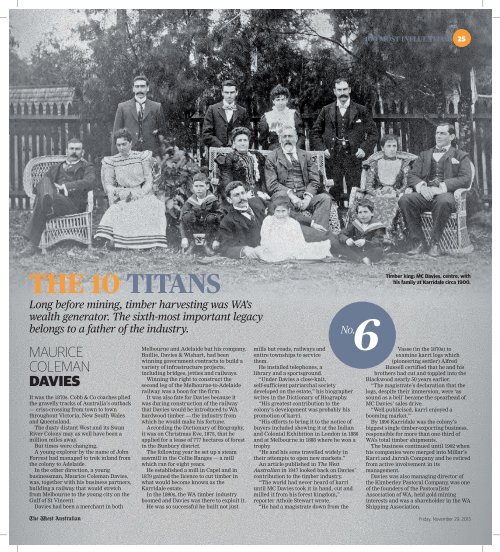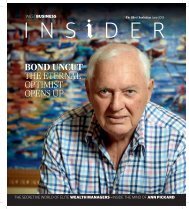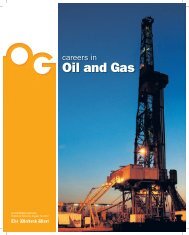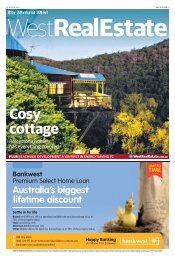Download This Feature
Download This Feature
Download This Feature
You also want an ePaper? Increase the reach of your titles
YUMPU automatically turns print PDFs into web optimized ePapers that Google loves.
100 MOST INFLUENTIAL25THE 10 TITANSLong before mining, timber harvesting was WA’swealth generator. The sixth-most important legacybelongs to a father of the industry.Timber king: MC Davies, centre, withhis family at Karridale circa 1900.MAURICECOLEMANDAVIESIt was the 1870s. Cobb & Co coaches pliedthe gravelly tracks of Australia’s outback— criss-crossing from town to townthroughout Victoria, New South Walesand Queensland.The dusty distant West and its SwanRiver Colony may as well have been amillion miles away.But times were changing.A young explorer by the name of JohnForrest had managed to trek inland fromthe colony to Adelaide.In the other direction, a youngbusinessman, Maurice Coleman Davies,was, together with his business partners,building a railway that would stretchfrom Melbourne to the young city on theGulf of St Vincent.Davies had been a merchant in bothMelbourne and Adelaide but his company,Baillie, Davies & Wishart, had beenwinning government contracts to build avariety of infrastructure projects,including bridges, jetties and railways.Winning the right to construct thesecond leg of the Melbourne-to-Adelaiderailway was a boon for the firm.It was also fate for Davies because itwas during construction of the railwaythat Davies would be introduced to WAhardwood timber — the industry fromwhich he would make his fortune.According the Dictionary of Biography,it was on Christmas Eve, 1875, that heapplied for a lease of 777 hectares of forestin the Bunbury district.The following year he set up a steamsawmill in the Collie Ranges — a millwhich ran for eight years.He established a mill in Capel and in1879 gained the licence to cut timber inwhat would become known as theKarridale estate.In the 1890s, the WA timber industryboomed and Davies was there to exploit it.He was so successful he built not justmills but roads, railways andentire townships to servicethem.He installed telephones, alibrary and a sportsground.“Under Davies a close-knit,self-sufficient patriarchal societydeveloped on the estate,” his biographerwrites in the Dictionary of Biography.“His greatest contribution to thecolony’s development was probably hispromotion of karri.“His efforts to bring it to the notice ofbuyers included showing it at the Indianand Colonial Exhibition in London in 1886and at Melbourne in 1888 where he won atrophy.“He and his sons travelled widely intheir attempts to open new markets.”An article published in The WestAustralian in 1947 looked back on Davies’contribution to the timber industry.“The world had never heard of karriuntil MC Davies took it in hand, cut andmilled it from his forest kingdom,”reporter Athole Stewart wrote.“He had a magistrate down from theVasse (in the 1870s) toexamine karri logs which(pioneering settler) AlfredBussell certified that he and hisbrothers had cut and toppled into theBlackwood nearly 50 years earlier.“The magistrate’s declaration that thelogs, despite their immersion, were ‘assound as a bell’ became the spearhead ofMC Davies’ sales drive.“Well-publicised, karri enjoyed abooming market.”By 1890 Karridale was the colony’sbiggest single timber-exporting business,responsible for more than one-third ofWA’s total timber shipments.The business continued until 1902 whenhis companies were merged into Millar’sKarri and Jarrah Company and he retiredfrom active involvement in itsmanagement.Davies was also managing director ofthe Kimberley Pastoral Company, was oneof the founders of the Pastoralists’Association of WA, held gold mininginterests and was a shareholder in the WAShipping Association.Friday, November 29, 2013
















